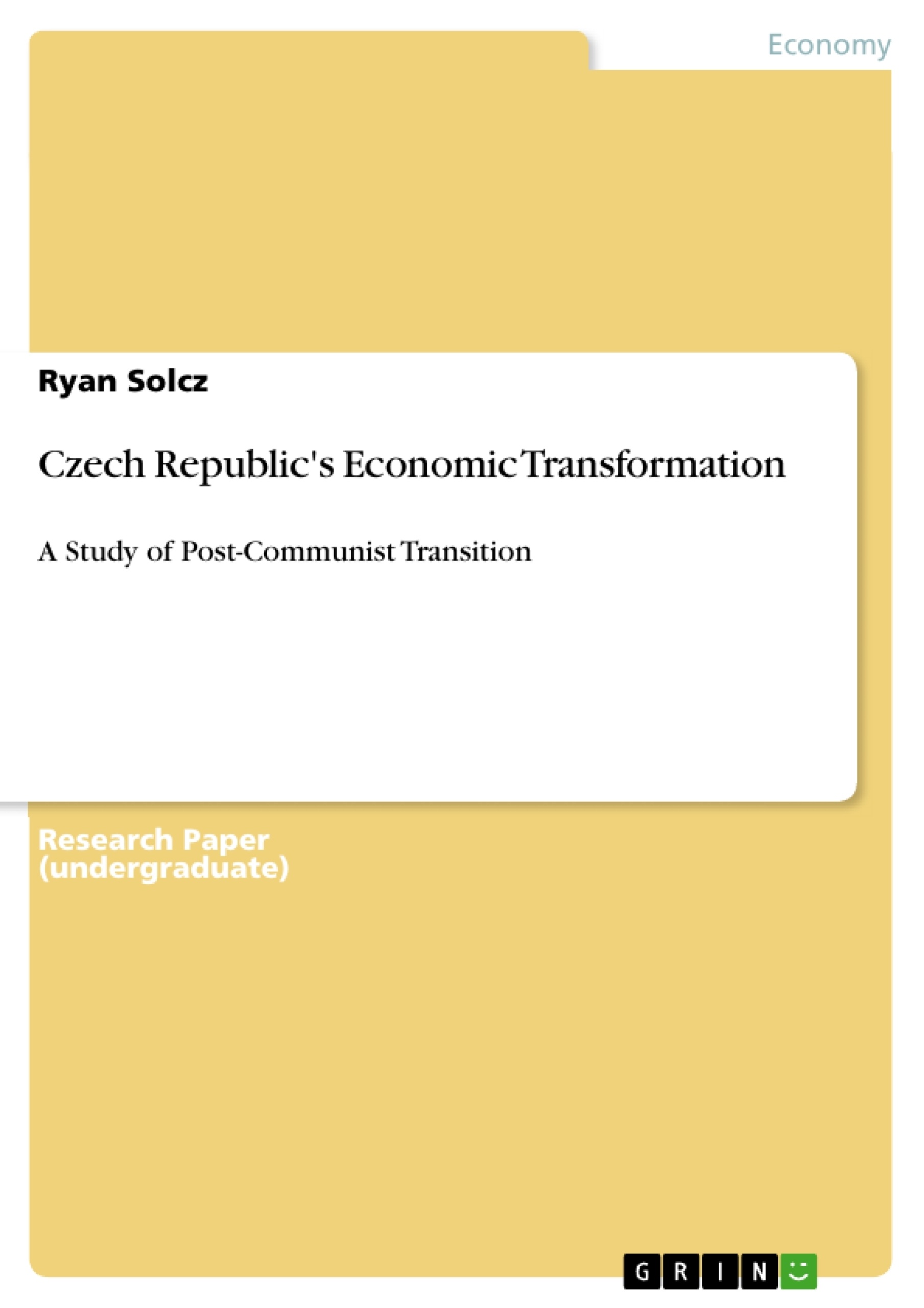The paper’s organization is as follows. First we discuss what we mean by transition, “big bang”, and “gradual” and we clear up the discrepancy in the literature regarding whether or not the Czech experience adhered to “big bang” or “gradualism” (it used both in fact).
Second, we discuss the inefficiencies in the Czech experience: employment, strategy, and finances, which showed up in the gradual phases of transition. Third, we discuss the Czech
Republic’s reaction to these inefficiencies. Fourth, we analyze the significance of setting.
Fifth, we conclude by comparing the Czech experience to other post-communist countries and by discussing what comes next.
Table of Contents
Definitions and Clarifications: “Big Bang” or “Gradualism”?
Inefficiencies in the Czech Case
Effective Response to Problems
The Importance of Setting
Conclusion: Czech Republic’s Path vs. Others
Where is the Czech Republic Headed?
Final Words
Appendix
Bibliography



